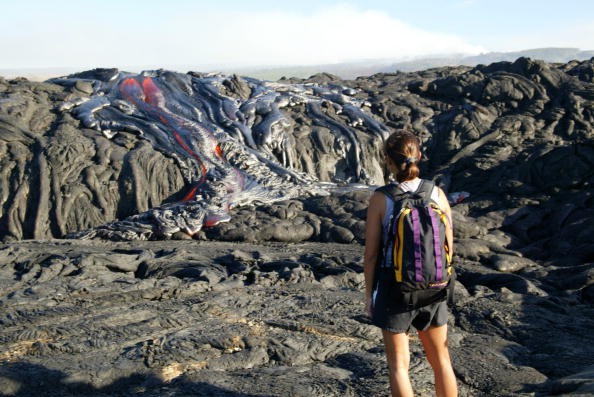
Scientists have unveiled as to how Hawaii's largest and most active volcanoes are constructed. They discovered that these volcanoes developed together with twin tracks because of a shift in the direction of the Pacific Plated dated three million years ago.
The Australian National University (ANU) researcher, Tim Jones led the study. He said that since 1849, scientists are already aware of the presence of these twin volcanic tracks. However, the reason behind it is still unknown up to this day.
According to Jones, "The analysis we did on past Pacific Plate motions is the first to reveal that there was a substantial change in motion 3 million years ago. It helps to explain the origin of Hawaii, Earth's biggest volcanic hotspot and one of the most popular tourist destinations in the world."
As Phys.org reported, the volcanic formation took place three million years ago in the twin tracks that are also present in other regions of the Pacific that include Samoa. Jones stated that this type of volcanic activity seems extraordinary due to the fact that it developed far from tectonic plate boundaries, where volcanoes are generally discovered.
Research School of Earth Sciences (RSES) co-researcher, Dr. Rhodri Davies mentioned that the twin volcanic tracks surfaced due to the misplacement of the plate motion's direction. He believes that the plate together with the plume will coordinate again at some phase in the time ahead. Davies added that the twin volcanic tracks will reunite again to form just one single track.
Hawaii lies with a chain of volcanoes along with seamounts which formed from extinct volcanoes that get more mature approaching the northwest. There are five known active volcanoes in Hawaii that sit in the twin volcanic tracks, namely; Kilauea, Mauna Loa, Haleakala, Hualalai, and Lo'ihi.
Based on the Oregon State University report regarding the volcano world, Kilauea is deliberated as one of the world's volcanoes that frequently erupt. It has been recorded that in 245 years, Kilauea has erupted 62 times which could be calculated as one eruption for every 3.95 years.
The researchers collaborated with the National Computational Infrastructure (NCI) at ANU to pattern the change in direction of the Pacific Plate. This also includes the demonstration of how the twin volcanic tracks formed across Hawaii.



